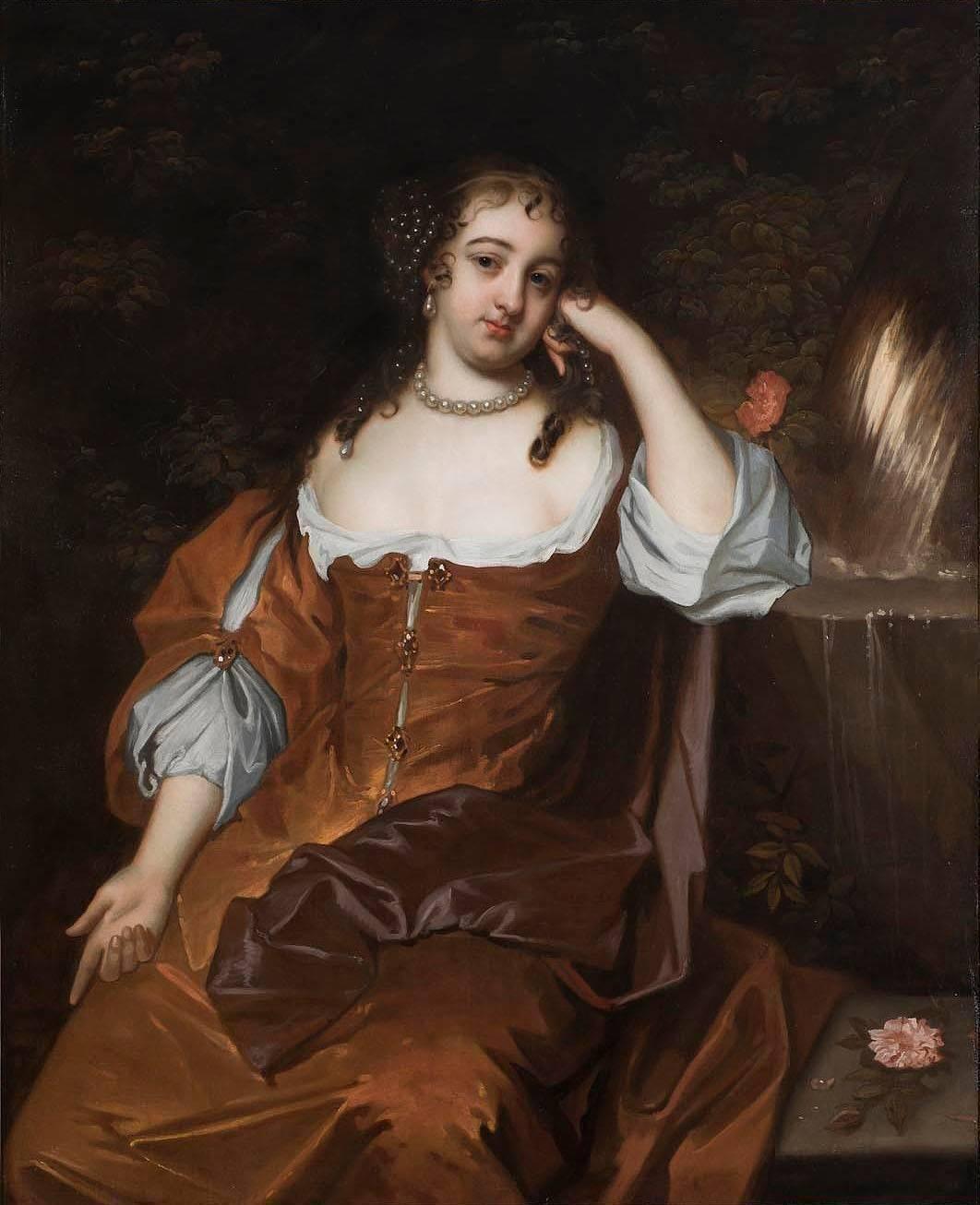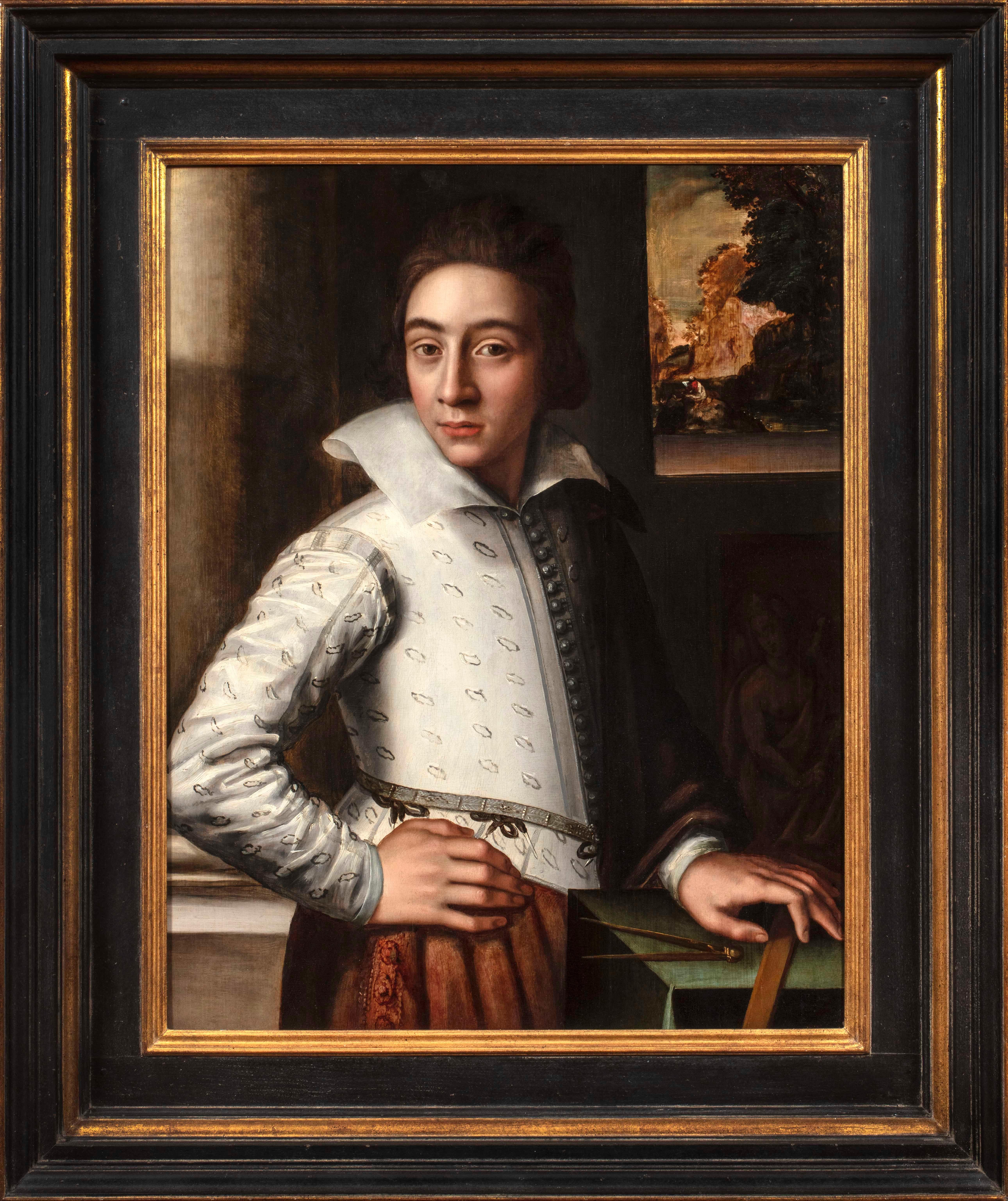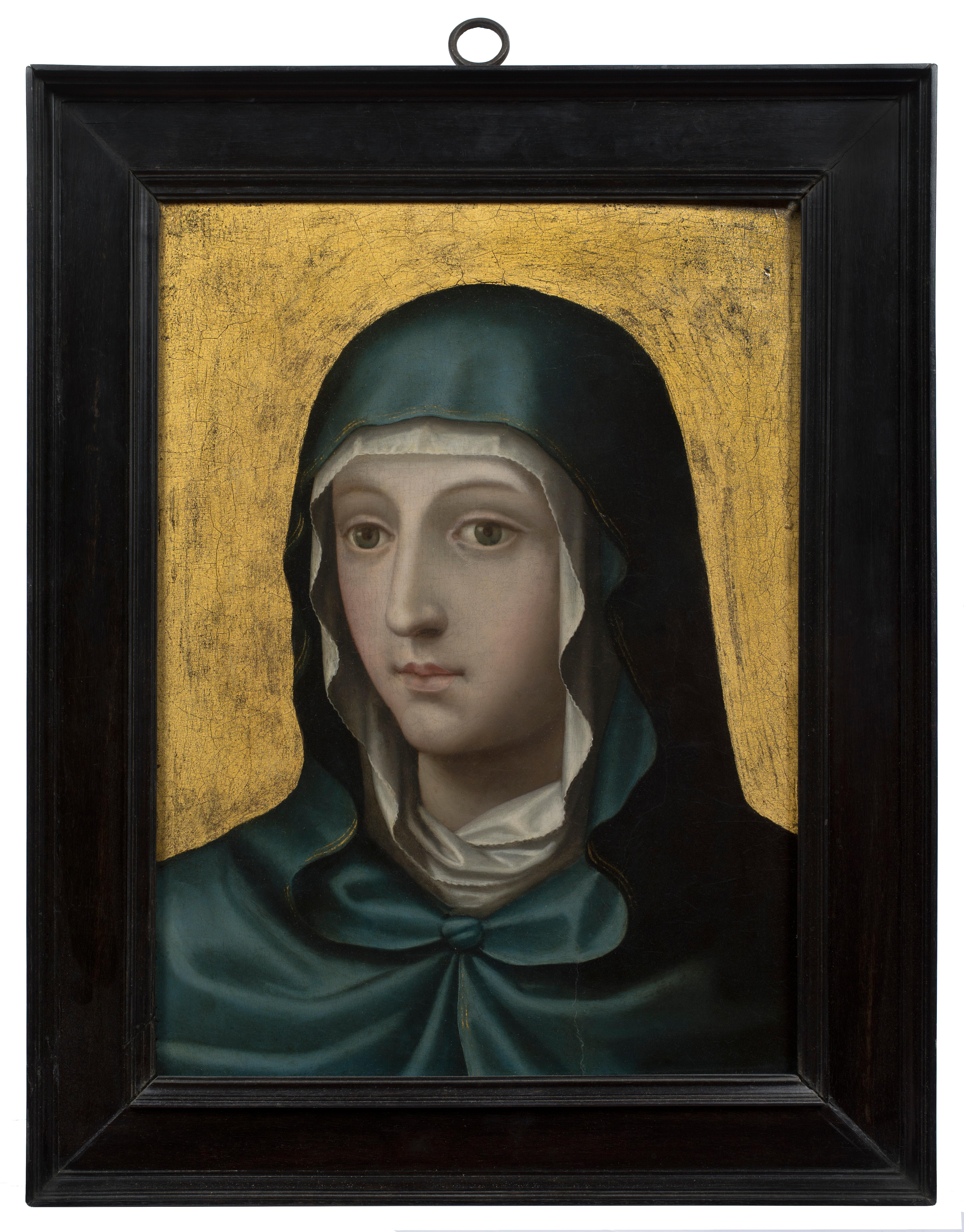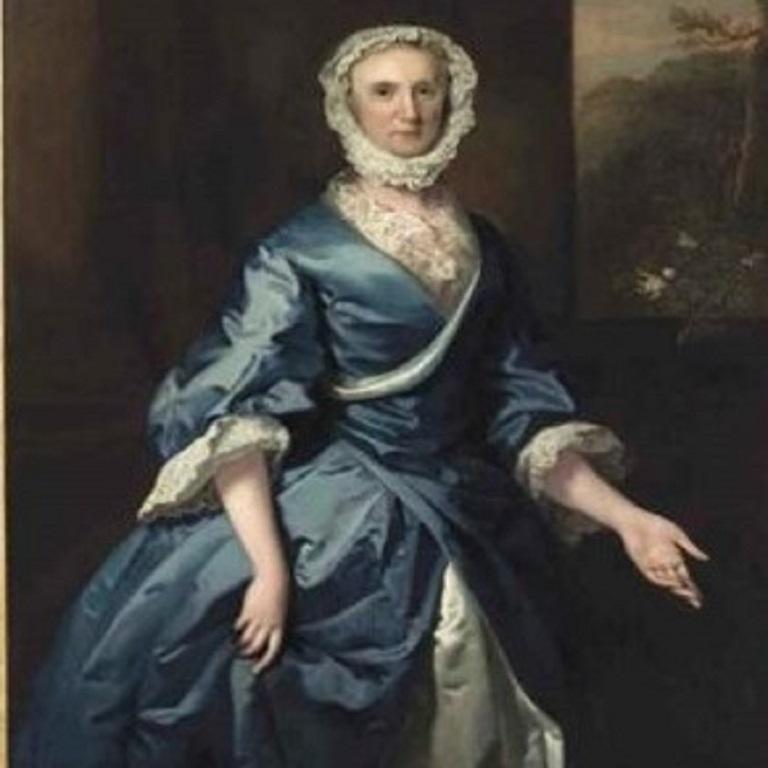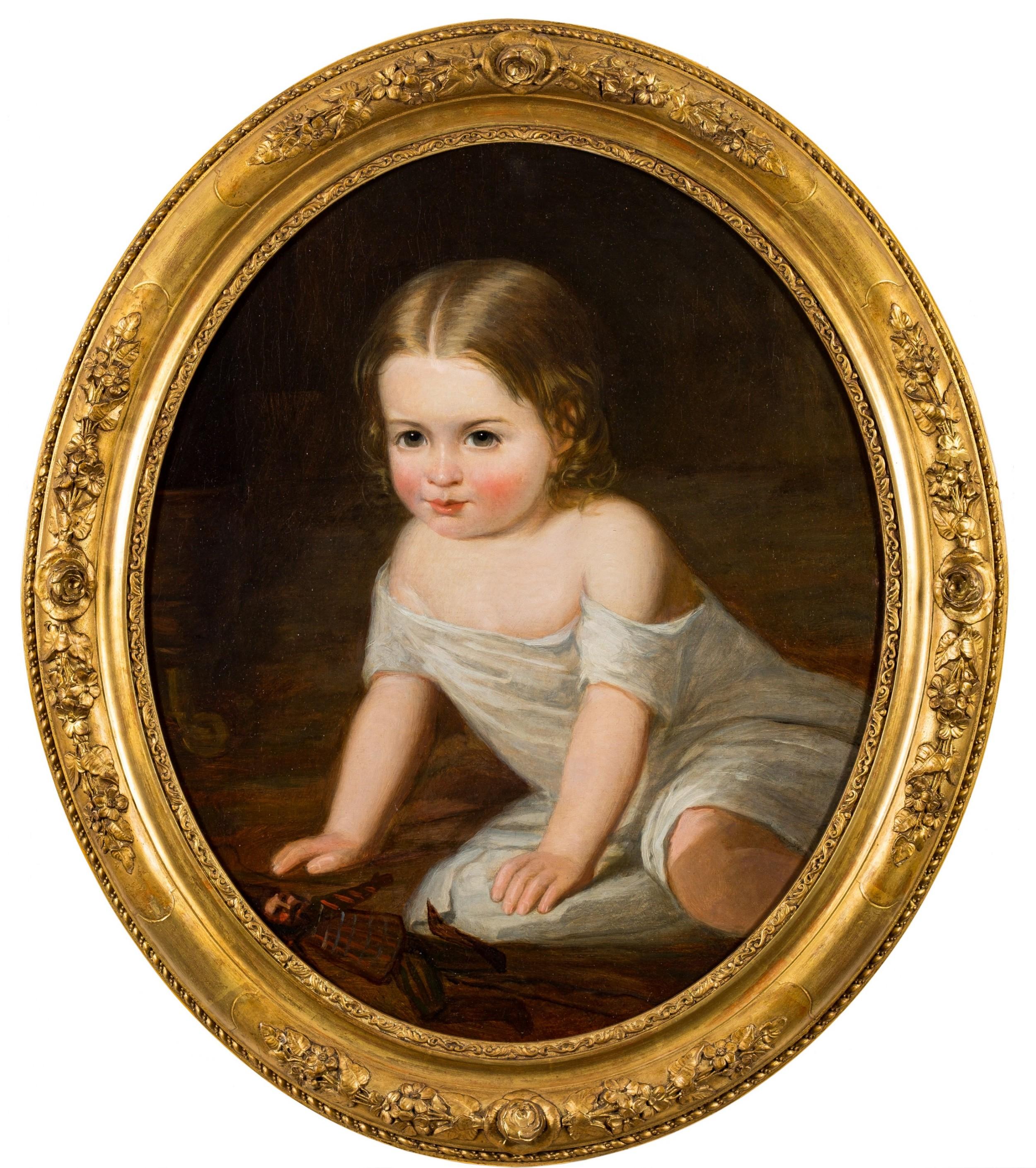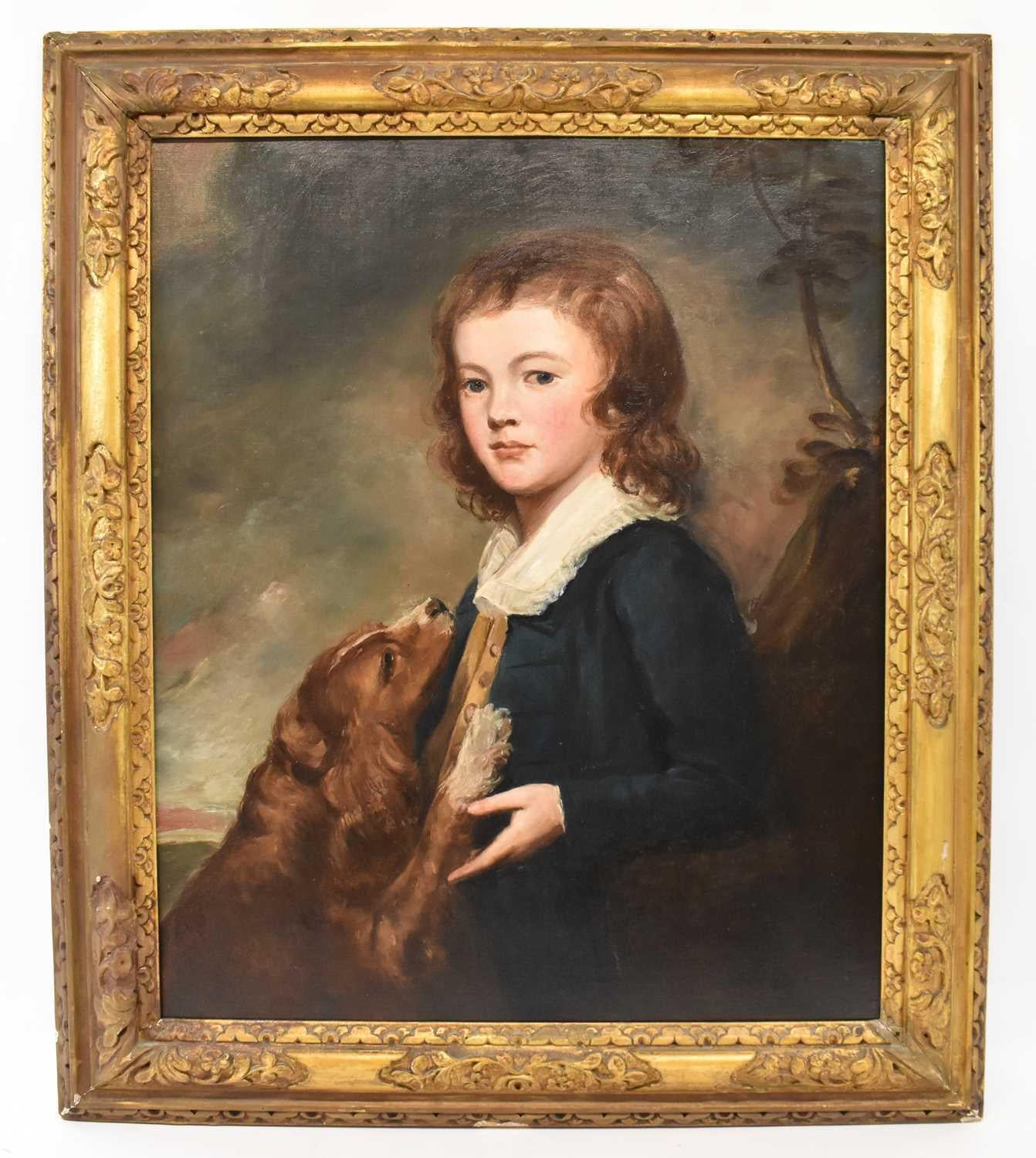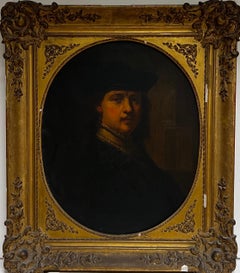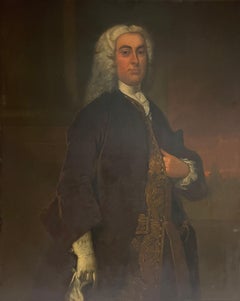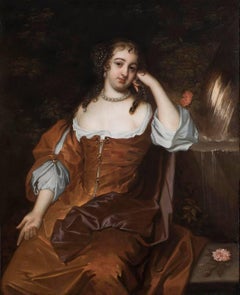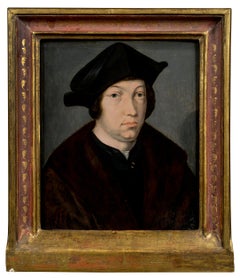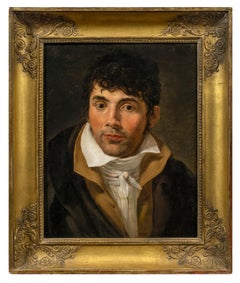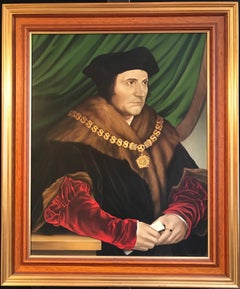
Sir Thomas More Large British Historical Portrait Painting
View Similar Items
Want more images or videos?
Request additional images or videos from the seller
1 of 15
Paul WorkmanSir Thomas More Large British Historical Portrait Painting1999
1999
About the Item
- Creator:Paul Workman
- Creation Year:1999
- Dimensions:Height: 36.5 in (92.71 cm)Width: 30.5 in (77.47 cm)Depth: 1 in (2.54 cm)
- Medium:
- Movement & Style:
- Period:
- Condition:
- Gallery Location:Cirencester, GB
- Reference Number:1stDibs: LU50934190962

About the Seller
5.0
Platinum Seller
These expertly vetted sellers are 1stDibs' most experienced sellers and are rated highest by our customers.
Established in 1989
1stDibs seller since 2016
3,472 sales on 1stDibs
Typical response time: 2 hours
More From This SellerView All
- Very Large Antique French Old Master Oil Painting after Rembrandt, self portraitBy Antique FrenchLocated in Cirencester, GloucestershireArtist/ School: French School, 19th century, after the earlier work by Rembrandt Title: Self portrait of the artist Medium: oil on canvas, framed in antique gilt swept frame. Fra...Category
19th Century Old Masters Portrait Paintings
MaterialsOil
- Huge Antique English Aristocratic Portrait of Baronet, Fine Ancestral PortraitLocated in Cirencester, GloucestershireEnglish School, 18th/ 19th century Portrait of Sir Wolstan Dixie, 4th Baronet *see notes below on sitter oil painting on canvas, unframed 50 x 40 inches condition: the painting is in very satisfactory condition without any damage, tears or punctures to the canvas. It is very original and would benefit from a clean ideally, slight scuffing to the edges of canvas. provenance: private collection, Leicestershire, England * The sitter is Sir Wolstan Dixie (4th Baronet, born 1700). Although the family came from a yeoman family of Huntingdonshire, his ancestor, also Sir Wolstan, made a fortune in the City as a merchant, and served as Lord Mayor of London in 1585-6, Sir Wolstan (the 1st Baronet) acquired the manor of Market Bosworth in west Leicestershire and in 1592, having no children...Category
18th Century Old Masters Figurative Paintings
MaterialsCanvas, Oil
- Fine 1600's Dutch/ Flemish Old Master Oil Painting Head Portrait of ManLocated in Cirencester, GloucestershireHead Portrait of a Man with Beard Flemish/ Dutch School, circa 1580-1620 period circle of Adriaen Thomasz. Key (Dutch, 1544, Antwerp – after 1589) oil on canvas, framed framed: 20 x ...Category
16th Century Old Masters Portrait Paintings
MaterialsOil
- Huge 18th Century English Aristocracy Portrait Mother & Child Stately Home oilLocated in Cirencester, GloucestershireEnglish School, 18th century oil painting on canvas, framed framed: 53 x 45 inches canvas: 48 x 40 inches provenance: private collection, England condition: overall very presentable...Category
Mid-18th Century Old Masters Portrait Paintings
MaterialsOil
- Huge Antique Oil Painting Portrait of Mrs Boone & Daughter after lost originalLocated in Cirencester, GloucestershireAfter SIR JOSHUA REYNOLDS (1723 -1792) Portrait of Mrs Boone and her Daughter Oil on Canvas Canvas Size : 55.25 x 43.25 inches (140 x 110 cms) Framed size : 62 x 50 inches (157.5 x 127 cms) Provenance : Private Collection, France This present picture is a good quality copy of a Reynolds original. Copies are notoriously difficult to date, but judging by the style and the materials used it is most probable that we are dealing with a picture painted between 1890 and 1920. The professional standard of the work makes this painting a fine and substantial piece of decoration in the 18th century English manner. But in this case there is more… The Reynolds original was painted around 1774-6 and depicts Harriet Boone, wife of Charles Boone with their daughter, also Harriet – later the wife of Sir William Drummond K.C. This picture was by 1865 in the collection of one T Colleton Garth (a relative of the younger Harriet Boone), who lent it to an exhibition of Old Master pictures at the British Institution in 1865. It was engraved in 1866 by G.H. Emery – presumably after attracting some attention at that exhibition. The painting was then bought from Garth by the dealers Agnew in 1903 and sold the following year in 1904 to the famous Anglo-German diamond magnate Alfred Beit. Two years later in 1906, Beit - who would fill his later years with numerous philanthropic donations in Germany, England and South Africa - gave the Reynolds original of Mrs Boone to the Berlin Gallery...Category
Late 19th Century Old Masters Portrait Paintings
MaterialsCanvas, Oil
- Huge 18th Century English Oil Aristocratic Portrait of a Gentleman StandingLocated in Cirencester, GloucestershirePortrait of an Aristocratic Gentleman British artist, first half 18th century oil on canvas, unframed canvas: 50 x 40 inches provenance: private collection, Dorset, England condition...Category
18th Century Old Masters Portrait Paintings
MaterialsOil, Canvas
You May Also Like
- Portrait of a Lady, 17th Century Flemish Oil Old MastersBy Jacob HuysmansLocated in London, GBJacob Huysmans Flemish 1633 - 1696 Portrait of a Lady Oil on canvas Image size: 49 x 40 ¼ inches Gilt frame Huysmans was born in Antwerp and came to England during the reign of Charles II where he became one of the fashionable painters of the court.. The diarist Samual Pepys noted the artist as capable of a more exact likeness than Lely. Certainly the diarist records that by August 1664 in the circle of Queen Catherine...Category
17th Century Old Masters Portrait Paintings
MaterialsCanvas, Oil, Acrylic
- Portrait of a ManLocated in New York, NYProvenance: with Leo Blumenreich and Julius Böhler, Munich, 1924 Dr. Frederic Goldstein Oppenheimer (1881-1963), San Antonio, Texas; by whom given to: Abraham M. Adler, New York, un...Category
16th Century Old Masters Portrait Paintings
MaterialsOil, Panel
$52,500 - Portrait of a GentlemanLocated in New York, NYCircle of Jacques-Louis David (French, 18th Century) Provenance: Private Collection, Buenos Aires Exhibited: “Art of Collecting,” Flint Institute of Art, Flint, Michigan, 23 November 2018 – 6 January 2019. This vibrant portrait of young man was traditionally considered a work by Jacques-Louis David, whose style it recalls, but to whom it cannot be convincingly attributed. Rather, it would appear to be by a painter in his immediate following—an artist likely working in France in the first decade of the nineteenth century. Several names have been proposed as the portrait’s author: François Gérard, Louis Hersent, Anne-Louis Girodet (Fig. 1), Theodore Gericault, and Jean-Baptiste Wicar, among others. Some have thought the artist Italian, and have proposed Andrea Appiani, Gaspare Landi...Category
18th Century Old Masters Paintings
MaterialsCanvas, Oil
$45,000 - Portrait of an Artist (possibly a Self-Portrait)Located in New York, NYProvenance: Bradley Collection. Private Collection, Upperville, Virginia. Literature: Katlijne van der Stighelen and Hans Vlieghe, Rubens: Portraits of Unidentified and Newly Identified Sitters painted in Antwerp, Corpus Rubenianum Ludwig Burchard, vol. 19, pt. 3, London and Turnhout, 2021, under cat. no. 189, p. 161, and fig. 75. This painting had previously been considered to be by an anonymous Tuscan painter of the sixteenth century in the orbit of Agnolo Bronzino. While the painting does in fact demonstrate a striking formal and compositional similarity to Bronzino’s portraits—compare the nearly identical pose of Bronzino’s Portrait of a Young Man in the Metropolitan Museum of Art (Fig. 1)—its style is completely foreign to Italian works of the period. That it is painted on an oak panel is further indication of its non-Italian origin. This portrait can in fact be confidently attributed to the Antwerp artist Huybrecht Beuckelaer. Huybrecht, the brother of Joachim Beuckelaer, has only recently been identified as the author of a distinct body of work formerly grouped under the name of the “Monogrammist HB.” In recent studies by Kreidl, Wolters, and Bruyn his remarkable career has been delineated: from its beginnings with Joachim in the workshop of Pieter Aertsen; to his evident travels to Italy where, it has been suggested, he came into contact with Bronzino’s paintings; to his return to Antwerp, where he seems to have assisted Anthonis Mor in painting costume in portraits; to his independent work in Antwerp (where he entered the Guild of Saint Luke in 1579); and, later to his career in England where, known as “Master Hubberd,” he was patronized by the Earl of Leicester. Our painting was recently published by Dr. Katlijne van der Stighelen and Dr. Hans Vlieghe in a volume of the Corpus Rubenianum, in which they write that the painting “has a very Italian air about it and fits convincingly within [Beuckelaer’s] oeuvre.” Stighelen and Vlieghe compare the painting with Peter Paul Ruben’s early Portrait of a Man, Possibly an Architect or Geographer in the Metropolitan Museum of Art, in which the sitter holds a compass and wears a similarly styled doublet (Fig. 2). Huybrecht both outlived and travelled further afield than his brother Joachim, who made his career primarily in Antwerp. Whereas Joachim was the main artistic inheritor of their uncle and teacher, Pieter Aertson, working in similar style and format as a specialist in large-scale genre and still-life paintings, Huybrecht clearly specialized as a painter of portraits and was greatly influenced by the foreign artists and works he encountered on his travels. His peripatetic life and his distinctly individual hand undoubtedly contributed to the fact his career and artistic output have only recently been rediscovered and reconstructed. His periods abroad seem to have overlapped with the mature phase of his brother Joachim’s career, who enrolled in the Antwerp Guild of Saint Luke much earlier than his brother, establishing himself as an independent painter in 1560. Joachim’s activity was confined to the following decade and half, and his latest work dates from the last year of his life, 1574. Our portrait was likely produced in the late 1560s, a dating supported by the dendrochronological investigation performed by Dr. Peter Klein, which established that it is painted on an oak panel with an earliest felling date of 1558 and with a fabrication date of ca. 1566. This painting presents a portrait of an artist, almost certainly Huybrecht’s self-portrait. The young sitter is confidently posed in a striking patterned white doublet with a wide collar and an abundance of buttons. He stands with his right arm akimbo, his exaggerated hands both a trademark of Huybrecht and his brother Joachim’s art, as well as a possible reference to the “hand of the artist.” The figure peers out of the painting, interacting intimately and directly with the viewer, as we witness him posed in an interior, the tools and results of his craft visible nearby. He holds a square or ruler in his left hand, while a drawing compass...Category
16th Century Old Masters Paintings
MaterialsOil, Panel
- The Veronica of the Virgin (Verónica de la Virgen)Located in New York, NYThe panel has been attributed both to Joan de Joanes and his son Vicente Macip Comes (Valencia, ca. 1555 – 1623). Provenance: Private Collection, England, by 1886 (according to stencils on the reverse) Private Collection, New Jersey, until 2010 The Veil of Veronica, often called the Sudarium, is one of the most important and well-known relics of Christ. According to legend, Veronica offered Christ her veil as he carried the cross to his crucifixion. He wiped his face with the veil, which left the cloth miraculously imprinted with his image. Depictions of Christ’s face on a veil, or simply images that focused in on Christ’s face, were treasured objects of religious devotion. The popularity of this format also inspired similar images of the face of the Virgin. The iconographic type of the present painting is known as the Veronica of the Virgin, which was especially favored in late medieval and early Renaissance Spain. Distinct from the images of the suffering Christ, the Veronica of the Virgin is based on the legend that Saint Luke painted a portrait of Mary from life. Although scholars have sometimes mistaken them for portraits of Queen Isabella I of Castile (known as Isabel la Católica) or as a depiction of Saint Maria Toribia (known as María de la Cabeza, or, Mary of the Head), paintings like this one were clearly intended as images of the Virgin in the style of Saint Luke’s lost portrait. The Veronica of the Virgin was especially popular in Valencia, and depictions of this subject produced there all stem back to one visual prototype: a Byzantine image in the city’s cathedral (Fig. 1). This early treatment of the Veronica was given to the cathedral in 1437 by Martin the Humane, King of Aragon and Valencia, who promoted religious veneration of the Veronica of the Virgin as part of the celebration of the Immaculate Conception of Mary. This devotion spread throughout Martin’s kingdom and particularly took hold in Valencia, where the Byzantine image resided. The image, which is displayed in a gold reliquary...Category
16th Century Old Masters Paintings
MaterialsOil, Wood Panel
- Portrait of a Lady with a ChiqueadorLocated in New York, NYProvenance: Torres Family Collection, Asunción, Paraguay, ca. 1967-2017 While the genre of portraiture flourished in the New World, very few examples of early Spanish colonial portraits have survived to the present day. This remarkable painting is a rare example of female portraiture, depicting a member of the highest echelons of society in Cuzco during the last quarter of the 17th century. Its most distinctive feature is the false beauty mark (called a chiqueador) that the sitter wears on her left temple. Chiqueadores served both a cosmetic and medicinal function. In addition to beautifying their wearers, these silk or velvet pouches often contained medicinal herbs thought to cure headaches. This painting depicts an unidentified lady from the Creole elite in Cuzco. Her formal posture and black costume are both typical of the established conventions of period portraiture and in line with the severe fashion of the Spanish court under the reign of Charles II, which remained current until the 18th century. She is shown in three-quarter profile, her long braids tied with soft pink bows and decorated with quatrefoil flowers, likely made of silver. Her facial features are idealized and rendered with great subtly, particularly in the rosy cheeks. While this portrait lacks the conventional coat of arms or cartouche that identifies the sitter, her high status is made clear by the wealth of jewels and luxury materials present in the painting. She is placed in an interior, set off against the red velvet curtain tied in the middle with a knot on her right, and the table covered with gold-trimmed red velvet cloth at the left. The sitter wears a four-tier pearl necklace with a knot in the center with matching three-tiered pearl bracelets and a cross-shaped earing with three increasingly large pearls. She also has several gold and silver rings on both hands—one holds a pair of silver gloves with red lining and the other is posed on a golden metal box, possibly a jewelry box. The materials of her costume are also of the highest quality, particularly the white lace trim of her wide neckline and circular cuffs. The historical moment in which this painting was produced was particularly rich in commissions of this kind. Following his arrival in Cuzco from Spain in the early 1670’s, bishop Manuel de Mollinedo y Angulo actively promoted the emergence of a distinctive regional school of painting in the city. Additionally, with the increase of wealth and economic prosperity in the New World, portraits quickly became a way for the growing elite class to celebrate their place in society and to preserve their memory. Portraits like this one would have been prominently displayed in a family’s home, perhaps in a dynastic portrait gallery. We are grateful to Professor Luis Eduardo Wuffarden for his assistance cataloguing this painting on the basis of high-resolution images. He has written that “the sober palette of the canvas, the quality of the pigments, the degree of aging, and the craquelure pattern on the painting layer confirm it to be an authentic and representative work of the Cuzco school of painting...Category
17th Century Old Masters Paintings
MaterialsCanvas, Oil
